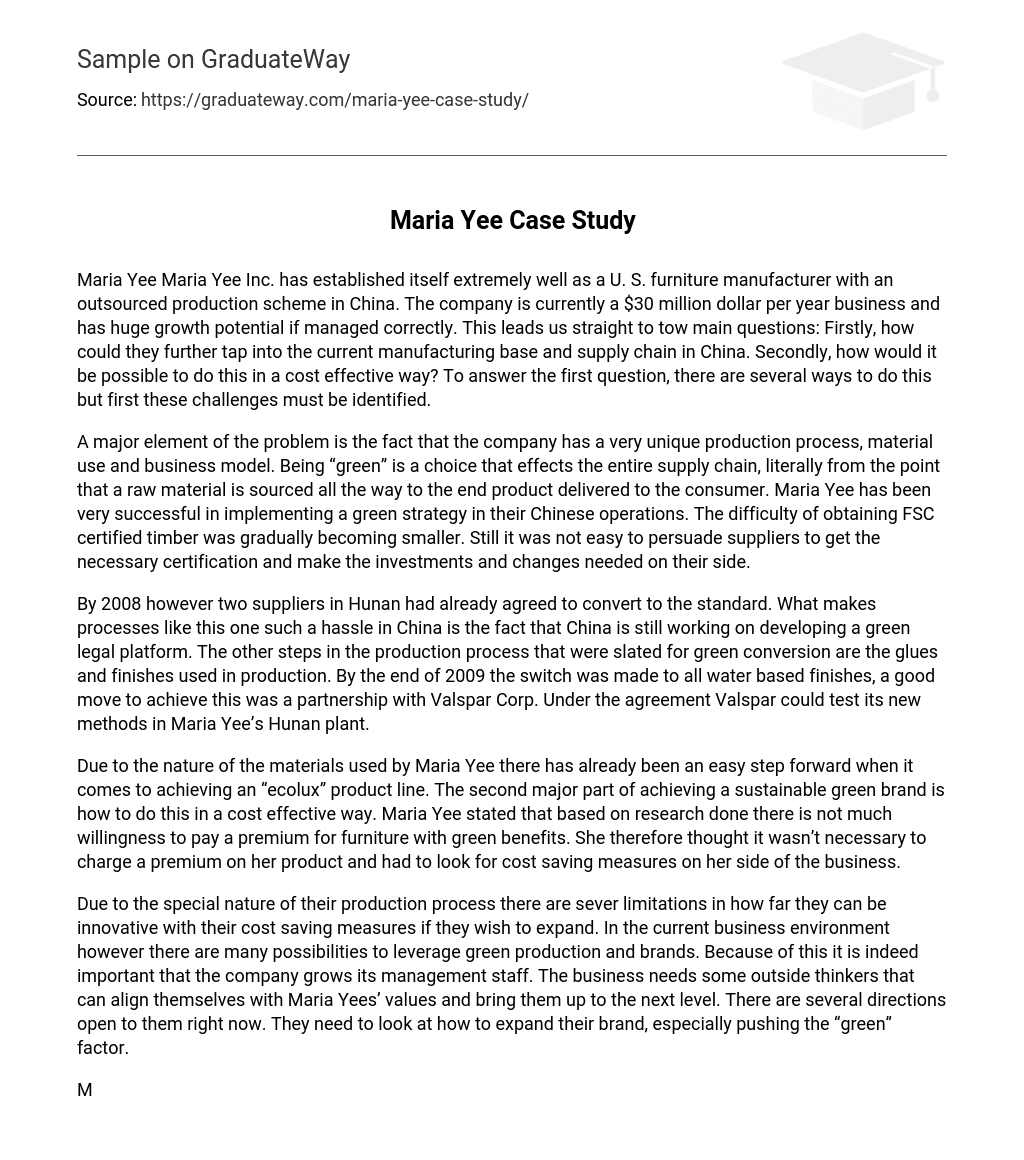Maria Yee Maria Yee Inc. has established itself extremely well as a U. S. furniture manufacturer with an outsourced production scheme in China. The company is currently a $30 million dollar per year business and has huge growth potential if managed correctly. This leads us straight to tow main questions: Firstly, how could they further tap into the current manufacturing base and supply chain in China. Secondly, how would it be possible to do this in a cost effective way? To answer the first question, there are several ways to do this but first these challenges must be identified.
A major element of the problem is the fact that the company has a very unique production process, material use and business model. Being “green” is a choice that effects the entire supply chain, literally from the point that a raw material is sourced all the way to the end product delivered to the consumer. Maria Yee has been very successful in implementing a green strategy in their Chinese operations. The difficulty of obtaining FSC certified timber was gradually becoming smaller. Still it was not easy to persuade suppliers to get the necessary certification and make the investments and changes needed on their side.
By 2008 however two suppliers in Hunan had already agreed to convert to the standard. What makes processes like this one such a hassle in China is the fact that China is still working on developing a green legal platform. The other steps in the production process that were slated for green conversion are the glues and finishes used in production. By the end of 2009 the switch was made to all water based finishes, a good move to achieve this was a partnership with Valspar Corp. Under the agreement Valspar could test its new methods in Maria Yee’s Hunan plant.
Due to the nature of the materials used by Maria Yee there has already been an easy step forward when it comes to achieving an “ecolux” product line. The second major part of achieving a sustainable green brand is how to do this in a cost effective way. Maria Yee stated that based on research done there is not much willingness to pay a premium for furniture with green benefits. She therefore thought it wasn’t necessary to charge a premium on her product and had to look for cost saving measures on her side of the business.
Due to the special nature of their production process there are sever limitations in how far they can be innovative with their cost saving measures if they wish to expand. In the current business environment however there are many possibilities to leverage green production and brands. Because of this it is indeed important that the company grows its management staff. The business needs some outside thinkers that can align themselves with Maria Yees’ values and bring them up to the next level. There are several directions open to them right now. They need to look at how to expand their brand, especially pushing the “green” factor.
Much of this is going to have to come from their product positioning, transforming the consumer demand from push to pull. They should continue to be a leader in green innovation, be it by implementing green supply chain strategies to transforming the footprint of their factories. Expansion into foreign markets is a must, as mentioned in the case Europe and Japan are options. Europe, and especially the Scandinavian countries are leaders when it comes to overall environmental awareness and would be a great stepping-stone to enter the Euro market.





